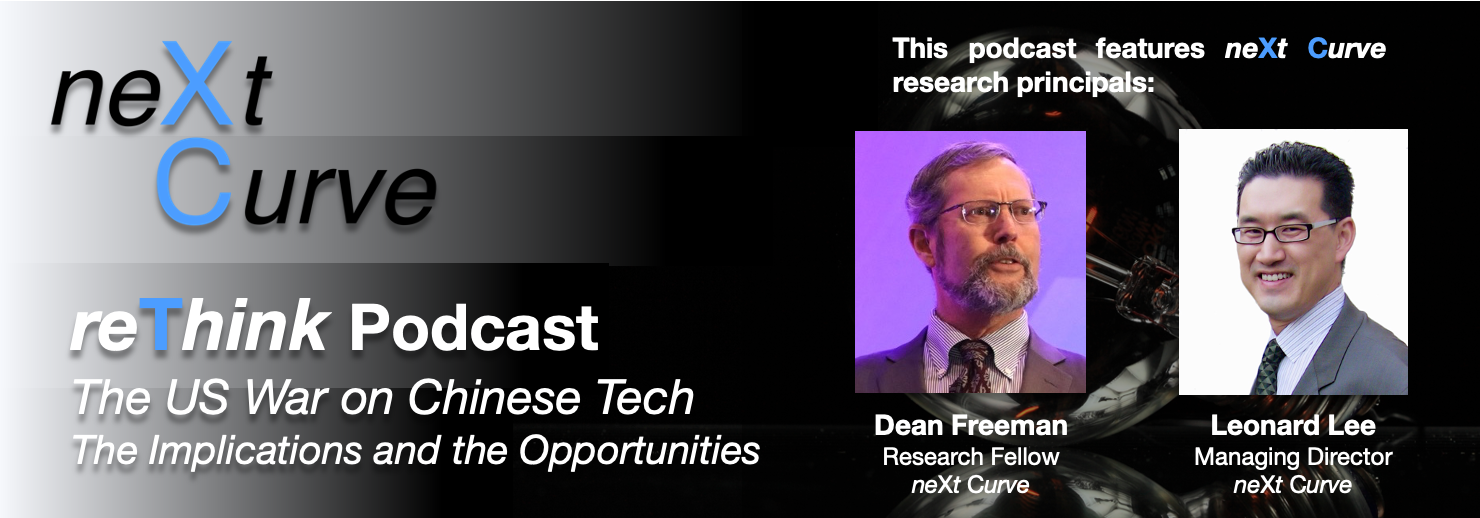The US Department of Commerce recently amended its foreign-produced direct product rule (FPDP) and Entity List to include HiSilicon, Huawei’s semiconductor design subsidiary. This action has been widely deemed an escalation of the US government’s “war on Huawei. In the broader context of the US sanction on Chinese tech firms, the addendum applies a consistency of “national security and foreign policy purpose” to HiSilicon.
This is certainly not good news for Huawei as it extends the risk of US policy on Chinese tech supply chains to Huawei’s previously unscathed Consumer Business Group (CBG). For the past five years, the CBG has been the growth engine among the Huawei’s three business groups which grew revenues by 34% in 2019 despite significant headwinds due to souring US-China trade relations.
Deputy Chairman of Huawei Technologies, Guo Ping, stated in his keynote at Huawei Analyst Summit (HAS) 2020 last week that the company has been in survival mode since May of 2019 when the US government initiated its sanction of 114 Chinese tech companies. Huawei has clearly considered how they would sustain their businesses without the US semiconductor industry as part of their supply chain equation and their long-term vision for 5G.
Huawei unveiled a number of strategies and innovations in response to US trade restrictions that could alter the 5G game and the future of mobile computing including the notion of the smartphone itself. During the 3-day event, Huawei outlined a novel paradigm for mobile computing that applies 5G principles of infrastructure virtualization and disaggregation. Conceptually, personal computing becomes cloud-native and distributed across trusted devices and services.
Huawei has come to the early realization that the smartphone does not need to be the supercomputer that it is today. Outside of gaming, smartphones are generally overpowered for the applications that consumers use on a daily basis such as email, content streaming, messaging and web browsing.
While Huawei does not discount leadership in logic as an important factor in the continued elevation of their consumer electronics brand, the company envisions an evolution of the smartphone and mobile computing away from today’s device-centric model towards a more distributed model made possible by 5G and complementary wireless technologies such as Bluetooth, NFC and Wi-Fi 6.
Huawei’s proposed architecture would virtualize and network computing capabilities and resources from the cloud, the edge to personal endpoint devices together into a fabric of distributed compute. Any trusted device connected to the network would be able to intelligently offload compute to available resources in an edge cloud or the cloud. Huawei expects that the URLLC (Ultra-Reliable Low-Latency Communications) will enable this novel mobile mesh computing model which is essentially the industry’s aspiration for 5G edge computing.
Last year, Huawei introduced Harmony OS which was initially presented as an alternative to Android and Google services deployed on Huawei handsets. In a dozen short months, Huawei has evolved the vision of Harmony OS into one of a unifying operating system for Huawei’s portfolio of consumer devices as well as those of certified partners.
Huawei has also advanced Super Uplink IP technology which helps operators realize Gigabit uplink speeds on their 5G networks. This feature allows for more symmetrical communications (equal uplink and downlink latency and capacity) that will enable mobile devices to connect to and share distributed resources across a personal edge cloud with 5G speed and reliability.
Not only do these capabilities have the disruptive potential to redefine the smartphone as we know it, Huawei’s new target architecture for mobile computing could alter the course of the broader device universe in a way that would make things uncomfortable for US tech companies including Qualcomm, Intel, Google and Apple. Huawei could throttle back its pursuit of the most advanced process nodes while delivering compelling and competitive mobile computing solutions and experiences for consumers, enterprises and telecom operators.
Huawei’s reinvention of mobile computing is just a matter of execution. Huawei has apparently planned for the Long March that founder, Ren Zhengfei, has long anticipated the company would have to take one day to survive. The US tech industry should find discomfort in the fact that Huawei has nascent capabilities and technologies today that could not only help them survive, but if push comes to shove, could help Huawei define the future of 5G in their image.

For more insights on neXt Curve’s 5G Evolution & IoT End Markets and our Semiconductor End Markets research themes contact us for a detailed briefing with one of our analysts. Follow our site to get updates and notifications of our research and our 2020 research agenda.
Related Content & Media
- Industry Insight: COVID-19 Tests China’s Resiliency
- COVID-19 Pandemic: the Crucible of 5G Innovation and Leadership
- Industry Insight: China’s Trade “Win-Win” and the Phase 2 Trade Deal
- Market Insight: The Fight for 5G Superiority will be Fought in the Cloud
- The Democratization of 5G Everything
- World Internet Conference 2018: Key Takeaways
by
Leonard Lee
Managing Director, neXt Curve
May 20, 2020
© 2020 neXt Curve. All rights reserved.
5 comments